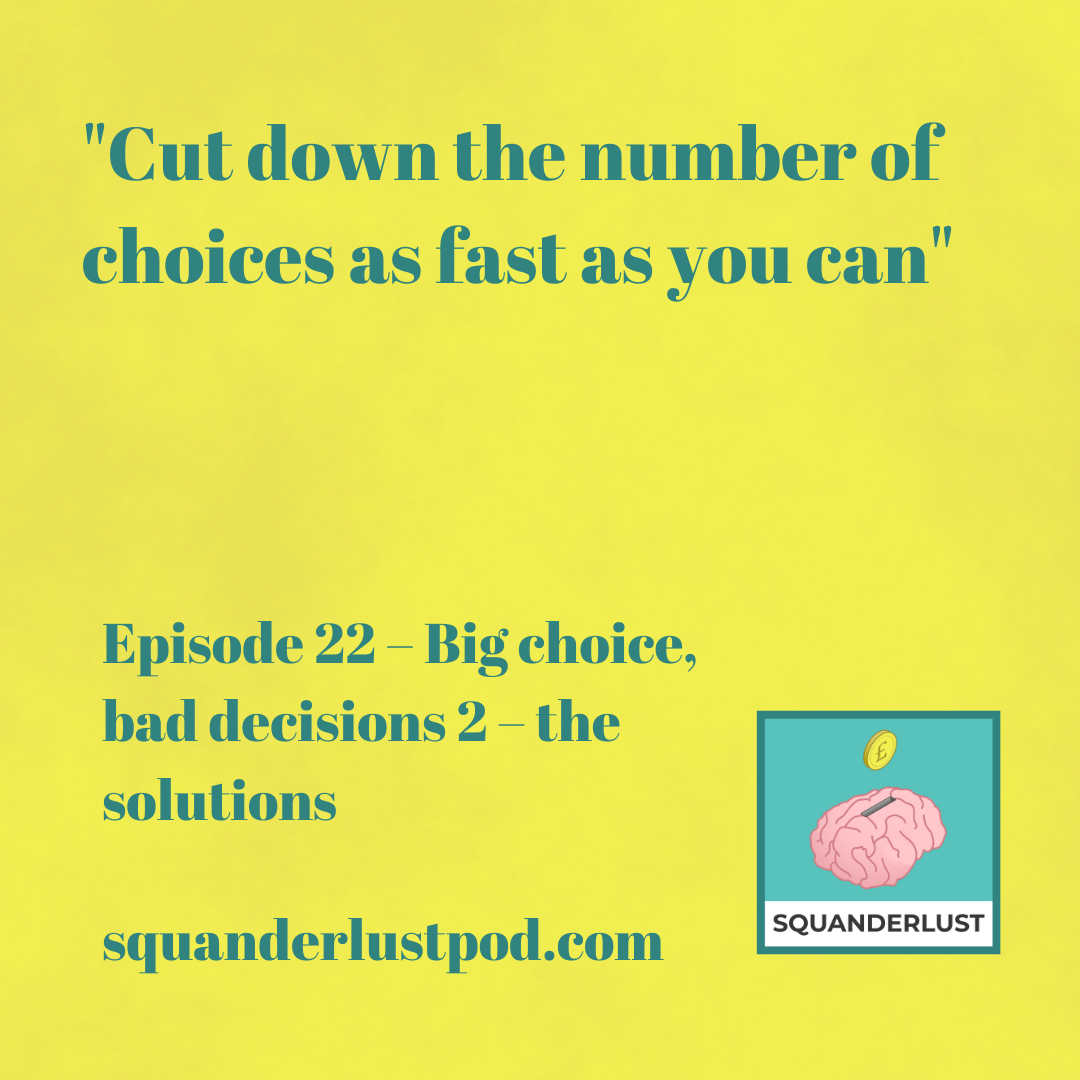You can also listen and subscribe on:
Show notes
This is our second episode on the work of Sheena Iyengar about choice. Sheena’s research shows too much choice is not good for us causing procrastination, settling for default options, worse choices and less satisfaction with our choices even when they are good.
Sheena’s tips (from this video):
Cut! If there are options you can rule out straight away do so. Make lists and cross out the options you don’t want as soon as possible.
Create categories. Sorting options into categories helps to compare like with like, which makes choosing less complicated. When you can cut out a whole category (e.g. I do not want a tracker mortgage i want a fixed rate or vice versa) that reduces choices immediately making the process simpler and easier.
Concretize. If you have a choice you’re struggling with, think about the outcomes from your options in as much sensory detail as possible. Try to find pictures and descriptions, write journals, if physical objects are involved, see if you can have contact with them. If a place is involved, try to visit or watch video footage. Think about things like smells, tastes and sensations. We are often able to intuit the right answer to a choice when we have concretized the options. An example is when house hunting. Most people say they ‘just know’ when they walk into the right property.
Conditioning. This is a system for staying focused when making a series of choices by making simple choices first and building up to the more complex choices. For example when reviewing your finances you might start by choosing a new instant access savings account. This is a very simple product with very few features to compare (the main ones are the interest rate, how you pay in and withdraw your money and the customer satisfaction ratings of the provider). From there you would work through slightly more complicated products such as credit cards and insurances and finish up with decisions about investing for retirement.
Our tips:
Ask yourself if you can create rules of thumb for your choices to streamline options. For example, wherever possible Martha will usually avoid any financial products with exit fees.
Get ok with the fact that some choices take time to make and assigning that time accordingly. Don’t get frustrated with yourself for not being able to choose quickly.
Buy good and buy once whenever you can afford to do so. Buying high quality durable goods means having to replace them less often which means not having to choose again so quickly.
Get ok with making choices and then moving on and not second-guessing.
Get ok with letting go of bad choices and moving on and choosing again. These things happen.
Think about the difference between choices you can make with the Marie Kondo 'spark joy' method (choosing food on a menu) versus the ones that you'd be wise to make with a process (most financial choices).
Don't try to make too many choices at once.
Do your research! Learning about financial products is painful but once you understand the basic ideas behind them they tend to be variations on a theme so even when you’re faced with something new you’ll grasp it more quickly.
Take advice sooner rather than later. There’s no point in beating yourself over the head with a decision if you could ask an expert.

